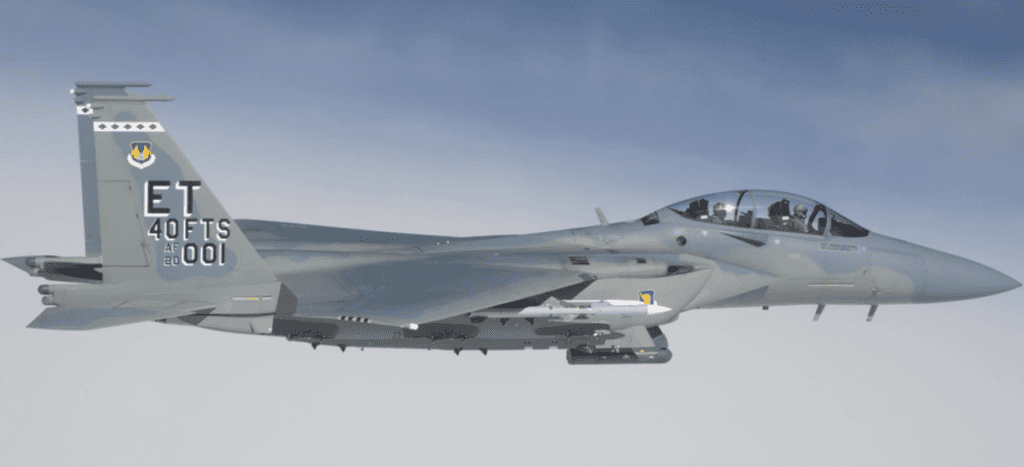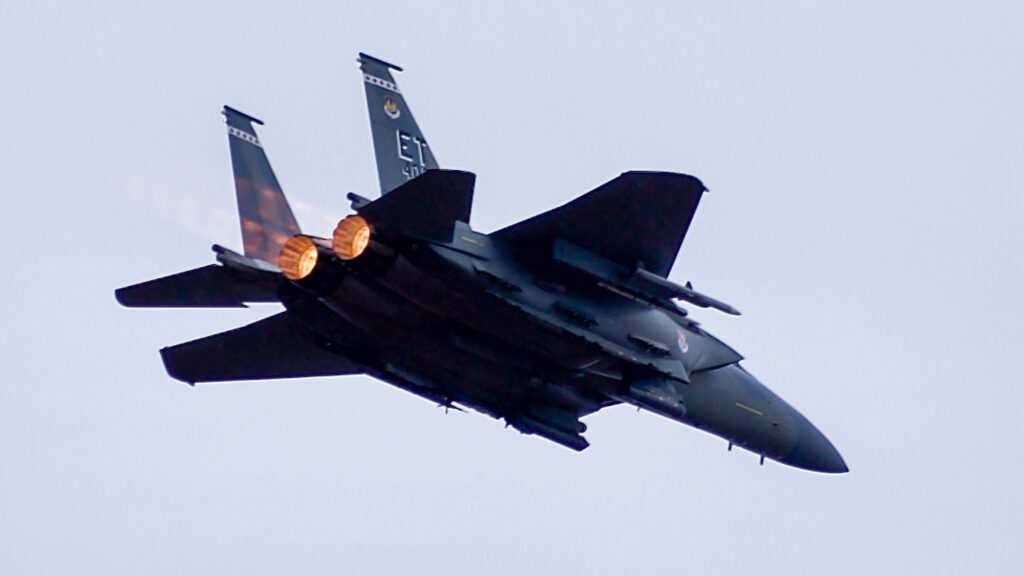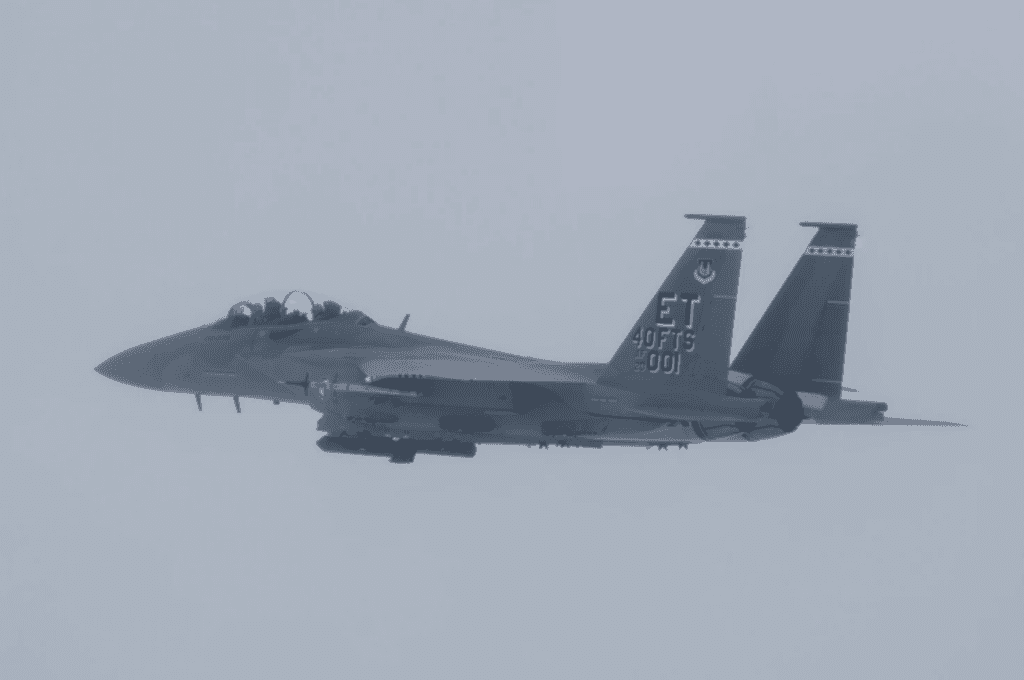Air Force’s newest fighter jet just fired a missile for the first time The F-15EX Eagle II fires an AIM-120D missile during a Weapons System Evaluation Program mission near Tyndall Air Force Base, Fla, Jan. 25, 2022. (U.S. Air Force photo by Tech. Sgt. John Raven)
The U.S. Air Force’s newest fighter jet, the F-15EX Eagle II successfully fired its first missile, an AIM-120D Advanced Medium-Range Air-to-Air Missile (AMRAAM), last week.
On Monday, the Air Force first announced the successful missile test firing, which took place on Jan. 25. An F-15EX Eagle II aircrew with the 40th Flight Test Squadron fired the missile at a BQM-167 aerial target drone, downing it over the Gulf of Mexico, as part of an air-to-air weapons system evaluation program (WSEP). The successful missile launch demonstrated the fighter jet’s ability to successfully launch the AIM-120D missile.

The successful missile test comes after the Air Force officially unveiled the F-15EX Eagle II in April of last year. The new fighter jet variant is an improvement on the F-15 design, which has been in use by the Air Force since 1976.
The new F-15EX entered service as an estimated 75 percent of the current F-15C and D variant fleets were serving beyond their certified service lifespans, while another 10 percent of the fleets were grounded due to “structural integrity issues.”
The new F-15 variant was designed with an open system architecture, meant to allow the Air Force to rapidly integrate new aircraft technologies.
The successful firing of the Eagle II’s first missile comes after more than six months of development and flight testing for the occasion.
Colton Myers, the F-15EX test project manager with the Operational Flight Program Combined Test Force, said, “This was an end-to-end verification of the entire weapons system, which will pave the way for more complex missile shots in the future.”

Myers praised not only the rapid six-month process in achieving the Eagle II’s first missile launch but the overall rapid development of the aircraft. The new F-15 variant was developed within nine months of Boeing receiving the contract award. Most aircraft of this nature typically take 39 months to develop.
The F-15EX has the capacity for up to 12 AIM-120D missiles.
“For a new platform, we’ve made an incredible amount of progress in a short period of time,” Myers said. “I don’t know of any other platform that has undergone such a rapid test program and it’s been incredible to be a part of the team that’s bringing this to reality.”
The missile test opportunity also served as the first missile shot for test pilot Maj. Benjamin Naumann. A major component of the WSEP is providing pilots with live-fire experience, and many pilots get to carry out their first live missile fire through the weapon test program.

“I am humbled to have the opportunity to fire the first weapon, but the bigger success is the verification of the F-15EX capability to live-fire a missile,” Naumann said in the Air Force press release. “This shot is another important step towards fielding the aircraft to combat units.”
During the test, Naumann had to both account for weather and fly within a specific set of test parameters, to ensure the testing team could collect the right data from the missile test.
The Air Force is initially ordering 144 of the new F-15 variants, which will begin to replace the F-15C fleet.




